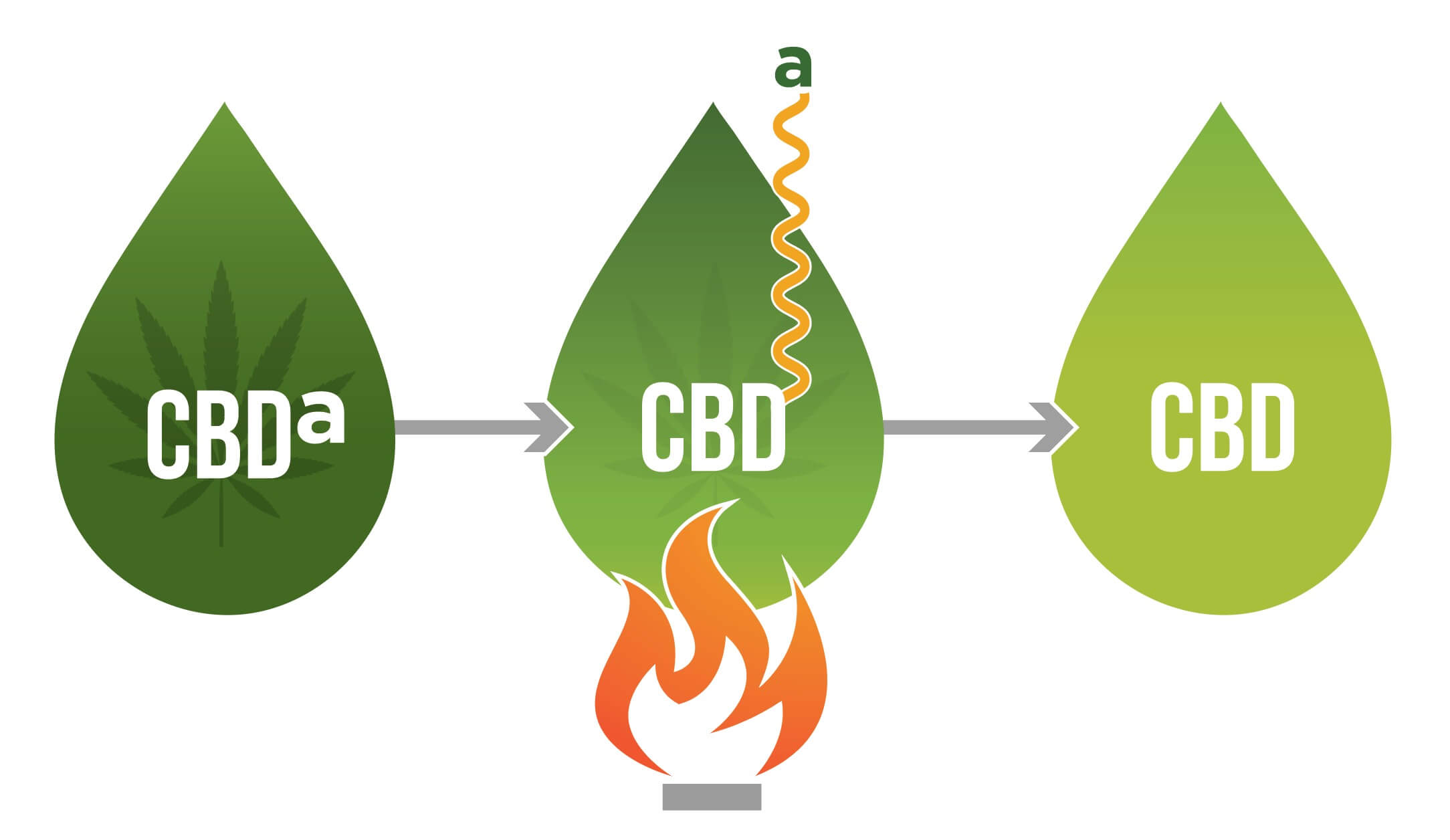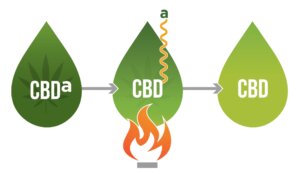Introduction to CBDA

Heard of CBDA?
Here’s an Introduction to help you understand what it is and how it works!
What is CBDA?
CBDA can most simply be explained as “raw” CBD.
You may be asking yourself what I mean by that.
Allow me to explain just a bit more. CBDA, technically called cannabidiolic acid, is a naturally occurring compound known as a cannabinoid, found in cannabis and hemp plants. CBDA is the precursor to CBD. Meaning when CBDA is exposed to heat (sun or other heat sources cause decarboxylation), it converts to CBD. Hence the “raw” explanation.
Here’s another way to think of it-ONIONS! We all know the difference in taste, smell, texture, acidity, etc. between raw and cooked onions. If you were to bite into a raw onion you’d get a powerful kick that’s quite different from the experience of eating gently cooked, lightly caramelized onions. It’s a similar experience with CBDA and CBD. CBDA has a “kick” to it.
CBDA may be a lesser known cannabinoid, but that’s just for now. Because of past challenges in research capabilities, we are just starting to understand its unique properties. It’s already clear that CBDA holds great promise as a potential treatment for a broad range of conditions. As more research and clinical studies are being conducted all over the world, we’ll continue to gain insight on how CBDA works with the body’s endocannabinoid system (ECS). More on that later.
For now, just think, without CBDA we’d never have CBD! And while we all know and love the benefits and versatility of CBD, the scientific community has only just begun in the last few years to share data about the marvels of CBDA. Something we do know for certain already is that CBDA has superpowers of its own. Another thing we know is that raw forms of cannabis and hemp have been used for millennia by people around the world in various preparations for their healing properties. In so many ways, what’s old is new again.
Hemp plant->CBDA->+heat->CBD

How Does CBDA Work?
Great question! Let’s first consider a few things. CBDA and CBD, despite their shared origin, have some chemical differences. That means they interact differently with the endocannabinoid system (ECS) and its receptors. Not all the interactions are perfectly understood at this time but certain ECS receptors in the body and the skin are more receptive to CBDA, making CBDA many times more potent in those instances. Studies suggest CBDA shows some binding affinity to the receptors in the body which regulate memory, mood, sleep, nausea, and more. CBDA has been shown to be a very powerful anti-inflammatory and to have profound healing benefits to the skin. For example, CBDA has been shown in clinical trials to heal scars in a matter of weeks, even old scars.
What other facts do we have so far?
There’s some good news and some bad news. Don’t worry, even the bad news is really good! The bad news is that we don’t know everything yet. The good news is that CBDA is powerful stuff with incredible healing potential.
Here are some highlights of what we know (from the scientists & researchers) about CBDA. Again, we have much more to discover about this exciting cannabinoid.
- CBDA and Anxiety: Drugs designed to target 5-HT receptors can help to modulate a variety of mood disorders. Interestingly, CBDA appears to bind to the 5-HT1A receptor with 100-fold greater affinity than CBD.1
- CBDA and Nausea: Research published in the British Journal of Pharmacology pitched CBDA against a model of motion-induced vomiting in shrews and nausea in rats.2
- CBDA and Inflammation: Research published in the journal Drug Metabolism & Disposition looked to determine CBDA’s impact on an inflammatory enzyme known as COX-2.3
- CBDA and Cancer cells: Research published in the Journal of Pharmacology and Experimental Therapeutics tested various cannabinoids, including CBDA, on a panel of tumor cell lines, 4 while a 2012 paper examined the potential link between CBDA and an invasive line of breast cancer cells. However, researchers were quick to note that future research is needed to determine the exact effects of CBDA.5
- CBDA and COVID-19: A 2021 in-vitro (outside of the human body) study tested CBDA and CBGA against the “entry of live SARS-CoV-2 into cells”. Researchers are hopeful the cannabinoids could “make for a much more challenging environment for SARS-CoV-2”.6
As you can see, there’s a lot of interest in and study of CBDA. While we have some exciting and significant information, there’s even more to explore and understand.
What are the key takeaways?
There’s only good news about CBDA to takeaway! CBDA Drops are currently available and can be used in a similar fashion to CBD Drops. As with CBD, it’s critical to have a vetted and trusted source for products. As a consumer of CBDA you should demand the same standards of quality as you have for CBD products. High quality CBDA Drops should have proper, transparent labeling and independent 3rd party lab reports.
And about the onion thing… CBDA Drops have a little kick to them. They’re potent. A little goes a long way and in case you missed it, there’s a kick. No, it’s not like biting into a raw onion. You won’t cry or anything like that. However, you’ll probably notice a little heat in the back of your throat. It passes in a few seconds and you typically only feel it the first few times you take CBDA Drops sublingually. There’s no heating sensation when CBDA Drops are applied to the skin. The taste? Try it for yourself. I find it surprisingly pleasant. It’s like a crisper, fresher tasting pure CBD.
The results? Again, try it for yourself. (I’m using it daily. I’ll share my progress in a few weeks.) Start with a few drops sublingually, aka “under the tongue” and monitor the effects. Journaling or just jotting down how you feel each day is very helpful in terms of measuring your experience.
One more thing, just like CBD, CBDA is legal in all 50 states and it is non-intoxicating. That means CBDA will not get you high or stoned.
Ready to give it a try?
Sources. Click on link to see full articles and studies.
- https://www.ncbi.nlm.nih.gov/pmc/articles/PMC6200872/
- https://bpspubs.onlinelibrary.wiley.com/doi/10.1111/bph.14073
- https://pubmed.ncbi.nlm.nih.gov/18556441/
- https://jpet.aspetjournals.org/content/318/3/1375
- https://www.sciencedirect.com/science/article/abs/pii/S0378427412012854?via%3Dihub
- https://pubmed.ncbi.nlm.nih.gov/35007072/
